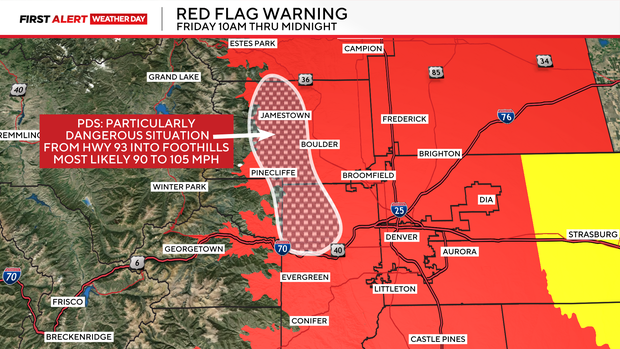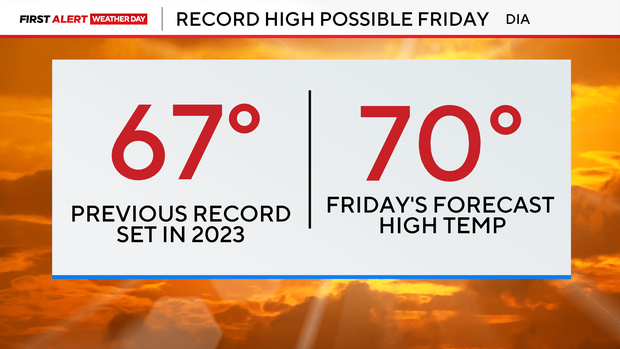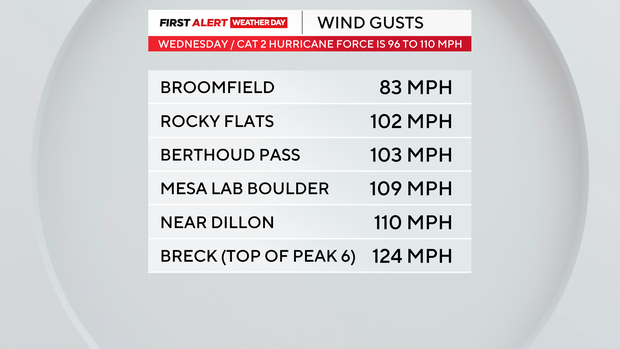Colorado
Arizona, Nevada and Mexico will lose same amount of Colorado River water next year as in 2024

WASHINGTON — Arizona, Nevada and Mexico will continue to live with less water next year from the Colorado River after the U.S. government on Thursday announced water cuts that preserve the status quo. Long-term challenges remain for the 40 million people reliant on the imperiled river.
The 1,450-mile (2,334-kilometer) river is a lifeline for the U.S. West and supplies water to cities and farms in northern Mexico, too. It supports seven Western states, more than two dozen Native American tribes and irrigates millions of acres of farmland in the American West. It also produces hydropower used across the region.
Years of overuse combined with rising temperatures and drought have meant less water flows in the Colorado today than in decades past.
The Interior Department announces water availability for the coming year months in advance so that cities, farmers and others can plan. Officials do so based on water levels at Lake Mead, one of the river’s two main reservoirs that act as barometers of its health.
Based on those levels, Arizona will again lose 18% of its total Colorado River allocation, while Mexico’s goes down 5%. The reduction for Nevada — which receives far less water than Arizona, California or Mexico — will stay at 7%.
The cuts announced Thursday are in the same “Tier 1” category that were in effect this year and in 2022, when the first federal cutbacks on the Colorado River took effect and magnified the crisis on the river. Even deeper cuts followed in 2023. Farmers in Arizona were hit hardest by those cuts.
Heavier rains and other water-saving efforts by Arizona, California and Nevada somewhat improved the short-term outlook for Lake Mead and Lake Powell, which is upstream of Mead on the Utah-Arizona border.
Officials on Thursday said the two reservoirs were at 37% capacity.
They lauded the ongoing efforts by Arizona, California and Nevada to save more water, which are in effect until 2026. The federal government is paying water users in those states for much of that conservation. Meanwhile, states, tribes and others are negotiating how they will share water from the river after 2026, when many current guidelines governing the river expire.
Tom Buschatzke, director of Arizona’s Department of Water Resources and the state’s lead negotiator in those talks, said Thursday that Arizonans had “committed to incredible conservation … to protect the Colorado River system.”
“Future conditions,” he added, “are likely to continue to force hard decisions.”
___
Associated Press reporter Amy Taxin contributed from Santa Ana, Calif.
___
The Associated Press receives support from the Walton Family Foundation for coverage of water and environmental policy. The AP is solely responsible for all content. For all of AP’s environmental coverage, visit https://apnews.com/hub/climate-and-environment

Colorado
Several Colorado highways temporarily closed due to high winds

BOULDER, Colo. (KKTV) – Several Colorado highways are closed due to high winds reaching up to 80 MPH in some locations.
According to the Colorado Department of Transportation (CDOT), the closures currently in place include:
- CO 93 both directions from 64th Ave (Arvada) to CO 170.
- CO 72, both directions from CO 7 to Ward Road.
- US 36, both directions from Boulder to Lyons.
- CO 128, both directions from CO 93 to McCaslin Boulevard.
Transportation officials said the winds may also cause traffic signal outages.
If traffic lights are experiencing a power outage, CDOT said drivers must treat it as a four-way stop:
- Come to a complete stop at the stop line or before entering the intersection.
- Vehicles proceed one at a time, in the order they arrived.
- If two vehicles arrive at the same time, the driver on the right goes first.
- Always yield to pedestrians and cyclists already in the crosswalk.
- Make eye contact when possible and proceed cautiously – do not assume others will stop.
Drivers are also encouraged to reduce speeds, keep both hands firmly on the steering wheel, and be alert for debris, downed signs and sudden gusts. High-profile vehicles, such as trucks, vans and vehicles towing trailers, are encouraged to avoid travel when closures or restrictions are in place.
CDOT also reminds commercial drivers to ensure tire chains are properly secured and not dragging, which can create sparks and increase wildfire risk during dry, windy conditions.
Copyright 2025 KKTV. All rights reserved.
Colorado
Dangerous fire situation looming for parts of Colorado’s Front Range, as another day of strong winds lies ahead

Dangerous weather conditions in Colorado are expected to team up for a surge in the Front Range fire danger. For most of the day Friday conditions will be favorable for rapid fire spread. Avoid outdoor burning and any activity that may produce a spark. Friday will be a First Alert Weather Day.
The triple threat of hurricane force winds, record heat and single digit relative humidity will all be in force from 10 a.m. to midnight on Friday. That is when a red flag warning for high fire danger is issued.
For the first time in Colorado, the National Weather Service office in Boulder has issued an extra warning know as “A Particularly Dangerous Situation” for northwest Jefferson and western Boulder counties for possible wind gusts of 85 to 105 mph.
The worst areas will be from Highway 93 up into the higher foothills. That, combined with single digit relative humidity, will make conditions worse that what the state experienced on Wednesday.
For the northern Front Range, the strongest winds will be west of I-25 into the foothills. Along and east of the I-25 corridor including the Denver metro area, winds may gust up to 40 mph with humidity levels as low as 8%. For that reason, the entire Denver metro area is in the warning area.
The strong winds will be warming downslope winds for eastern Colorado with highs on Friday shooting up into the 60s and 70s. Denver may have a new record high of 70 degrees. The old record is 67 degrees last set in 2023.
Top wind gusts may likely be stronger than Wednesday. Those gusts were hurricane force in some areas of the foothills and mountains with gusty winds comparable to those of a category 2 or 3 hurricane.
Colorado
These wind gusts in Colorado reached the strength of a Category 3 hurricane

DENVER (KDVR) — Strong wind gusts at the speed of a Category 3 hurricane swept through two Colorado counties on Wednesday.
Strong winds blew through the state on Wednesday, leaving tens of thousands without power, causing safety road closures and recording wind gusts reaching over 100 mph. In some areas, winds were even higher, with Summit and Grand counties seeing 124 mph wind gusts.
At 9 p.m. on Wednesday, one weather station on top of Breckenridge Peak 6 picked up a wind gust of 124 mph in Summit County. Then, at 9:52 p.m., another weather station at Parsenn Bowl Summit in Grand County picked up a wind gust of 124 mph, according to National Weather Service records.
These two wind gusts weren’t only the strongest gusts on Wednesday, they were so strong that they were comparable to the strength of a devastating hurricane.
The Pinpoint Weather team said it was the strength of a high-end Category 3 hurricane. These winds also compare to a high-end EF2 tornado, which could damage one or two family residences, according to NWS.
These weren’t the only areas that saw high winds. Several counties across Colorado saw winds higher than 100 mph throughout Wednesday.
The Pinpoint Weather team expects the wind to continue into Friday with continued fire danger. The winds are expected to slow down throughout the weekend.
-

 Iowa5 days ago
Iowa5 days agoAddy Brown motivated to step up in Audi Crooks’ absence vs. UNI
-

 Iowa6 days ago
Iowa6 days agoHow much snow did Iowa get? See Iowa’s latest snowfall totals
-

 Maine3 days ago
Maine3 days agoElementary-aged student killed in school bus crash in southern Maine
-

 Maryland5 days ago
Maryland5 days agoFrigid temperatures to start the week in Maryland
-

 Technology1 week ago
Technology1 week agoThe Game Awards are losing their luster
-

 South Dakota5 days ago
South Dakota5 days agoNature: Snow in South Dakota
-

 Nebraska1 week ago
Nebraska1 week agoNebraska lands commitment from DL Jayden Travers adding to early Top 5 recruiting class
-

 Sports1 week ago
Sports1 week agoPro Football Hall of Famer Troy Aikman critiques NIL landscape, transfer rules and Lane Kiffin’s LSU move


























